When choosing a crown and bridge supplier, a lab’s ability to adopt and operationalize new technologies isn’t optional—it’s mission-critical. For DSOs, group practices, and growth-oriented labs, this capability determines whether digital investments translate into consistent outcomes, faster turnarounds, and scalable quality.
What sets mature labs apart isn’t just tools—it’s how those tools are integrated. Look for validated CAD/CAM and 3D printing workflows, technician readiness, digital SOPs, and documented case success. Assess compatibility with your scanners and file types, their approach to onboarding, and how they manage volume without quality drift.
Request validation runs, ask tough questions, and verify claims. The labs worth trusting aren’t just going digital—they’re already delivering with it.
Why Should You Assess a Lab’s Capability to Implement New Technologies?
Evaluating a dental lab’s ability to adopt and implement new technologies isn’t about future potential—it’s about ensuring quality, consistency, and efficiency in your cases right now. A lab’s technology implementation maturity determines how well it can handle modern workflows, respond to changes, and scale without compromise.
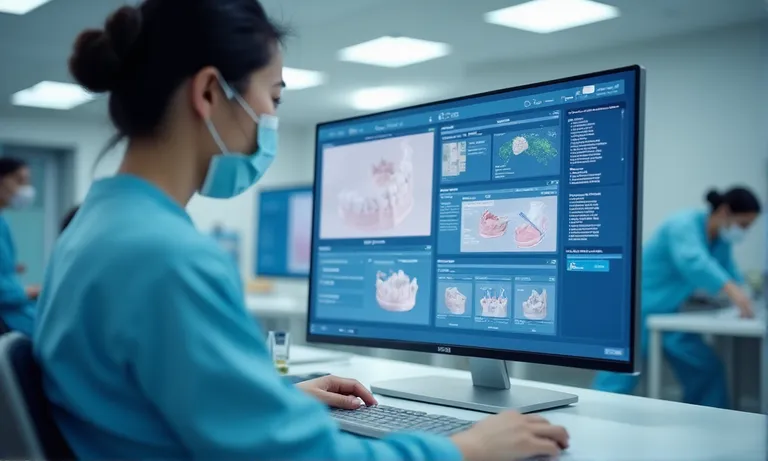
Dental-lab-technology-setup-overview
How does a lab’s tech implementation affect product consistency and fit?
New digital tools—whether AI-assisted margining, 5-axis milling, or multi-material 3D printing—only improve outcomes if they are properly implemented and maintained. A lab may own advanced software, but if toolpaths aren’t calibrated, or technicians are under-trained, the results remain inconsistent. We’ve supported clients who assumed technology presence equaled performance, only to find that gaps in adoption led to recurring contact adjustments or shade mismatches.
Adoption isn’t about tool availability—it’s about integration into daily operations.
What are the hidden risks of choosing a lab with poor adoption capability?
- Remake spikes: Labs unfamiliar with new tools often misapply settings, leading to increased fracture or seating errors
- Bottlenecks: Without proper onboarding, new tech may slow the process instead of speeding it up
- High technician variability: When only part of the team uses updated workflows, quality varies between operators
- Reactive troubleshooting: Labs without mature SOPs tend to solve problems after they occur—not before
Many labs advertise innovation, but without deep adoption, these tools can introduce more risk than benefit.
Why is this critical for digital workflows, DSO models, and large-volume orders?
For DSOs and scaling clinics, the lab relationship is no longer just about single-case fulfillment—it’s about consistency across systems, locations, and teams. In digital workflows, even small variances in scanner compatibility or CAM interpretation can cascade into remake cycles and lost time.
We’ve seen that labs with mature implementation habits reduce escalations, align better with digital protocols, and provide scalable support without reinventing the wheel for each new tech.
Labs that embrace new technology must do more than buy equipment—they must build habits, train teams, and align systems. For clients evaluating partnerships, tech adoption capability is not optional. It’s a prerequisite for smooth, scalable, risk-mitigated collaboration.
What Technical and Operational Signals Indicate Implementation Capability?
Technology alone doesn’t improve clinical results—how a lab deploys and operationalizes it makes the real difference. Evaluating a lab’s implementation capability means looking beyond tool ownership into how those tools are used, maintained, and integrated into daily operations.
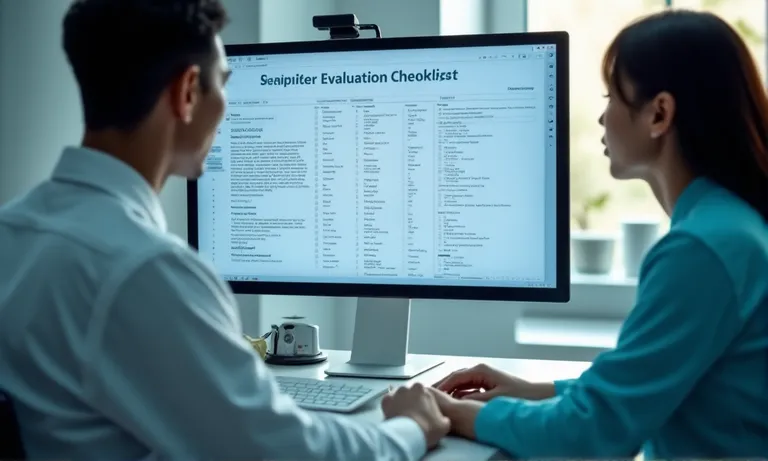
Dental-lab-operational-checkpoints-digital
Does the lab have validated systems for CAD/CAM, AI, 3D printing, and digital design?
Look for signs of system-level integration, such as:
- Unified software environment: Are design, CAM, and milling software versions synchronized across stations?
- AI-assisted tools in real use: Is AI being used for margin detection, nesting, or toolpath optimization—not just advertised?
- 3D printer workflows: Are printers operated with verified print profiles, material logs, and post-processing QA?
- Cross-tool interoperability: Does the lab run STL, PLY, and design files across multiple systems without bottlenecks?
Presence of these systems indicates not only technical readiness but real operational deployment.
Are technicians trained and actively using new tools in live cases?
Even advanced tools underperform if adoption is uneven across teams. We’ve visited labs where only one technician knew how to operate a new printer, or where CAM updates were skipped by half the team to avoid retraining. The outcome? Inconsistency in contact fit, material curing, or milling results—even with identical files.
Training logs, internal certifications, or even cross-team demos are positive signals that adoption is institutionalized—not isolated.
Are internal SOPs, QA checks, and handoffs aligned with digital production?
| Process Area | Low Implementation Lab | Mature Implementation Lab |
|---|---|---|
| CAD/CAM SOPs | Informal or technician-specific | Documented workflows with change logs |
| QA tracking | Case-based manual checklists | Software-logged checkpoints at each production step |
| Technician onboarding | Verbal shadowing | Structured, module-based tech onboarding |
| Tech updates | Irregular, ad-hoc | Scheduled version audits with rollback protocols |
Labs with high operational maturity don’t just “own the tools”—they build repeatable processes around them.
Technology readiness is only meaningful when it translates into system-wide consistency. When assessing labs, watch how the tools are actually used—not just how they’re marketed.
What Questions Should You Ask Before Partnering with a Tech-Driven Lab?
Not all labs that claim to be “digital-ready” are truly prepared for real-world collaboration. Asking the right questions during supplier evaluation helps you distinguish between marketing promises and operational reality—before you send your first case.
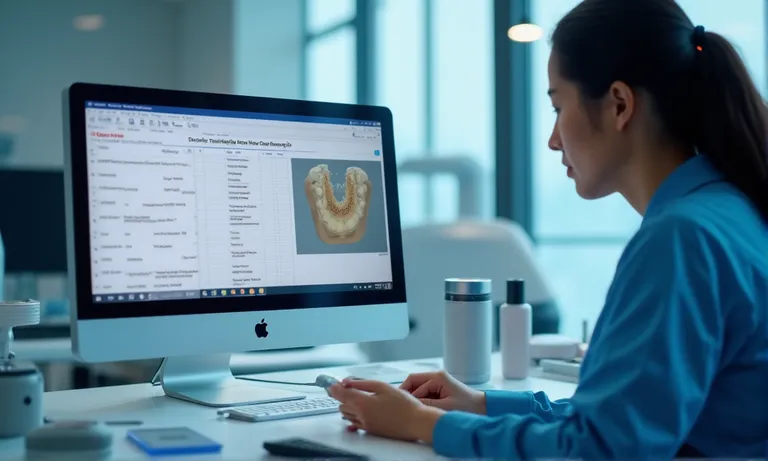
Image
ALT: Dental-lab-client-review-questionnaire
Prompt: A highly realistic, professional image showing a procurement manager on a video call with a dental lab technician. A screen shows a supplier evaluation checklist with categories like “Digital SOPs,” “Tool Compatibility,” and “Case Study Examples.” The technician is demonstrating CAM software on a shared screen.
Can they provide case studies or examples of recent tech implementation?
Ask for evidence—not just equipment lists. Look for:
- Before-and-after metrics: Has their tool adoption actually reduced remake rates or chairside adjustment time?
- Client use cases: Can they share examples from clinics with similar scanner platforms or case types?
- Live file comparisons: Can they walk you through how a scan becomes a milled unit using their actual system?
Verifiable case studies are more valuable than generalized capability slides.
What pilot run or trial mechanisms are available before scaling orders?
If the lab truly understands its own implementation stage, it should have clear onboarding and trial structures. This may include:
- A pre-set number of trial units with parallel manual review
- Clear feedback loops with your lead technician or coordinator
- Evaluation templates with fit/contact/surface scoring
- SLA benchmarking prior to scaling volume
Labs confident in their workflows welcome pilots—not avoid them.
How do they handle version upgrades, integration changes, and client onboarding?
One DSO group we worked with reported that a prior lab silently upgraded their CAM engine version without notice—resulting in 27 cases with shifted marginal fit due to a toolpath recalibration mismatch. No warning, no rollback. After switching to a lab with documented version control, client alert protocols, and structured onboarding, that DSO never saw an unexpected format deviation again.
The lesson: ask not just what systems they use, but how they handle change. A tech-driven lab isn’t just fast—it’s transparent, responsive, and version-conscious.
Asking the right operational questions doesn’t just protect your first case—it protects every future case that follows.
How to Assess a Lab’s Compatibility with Your Existing Digital Workflow?
Digital compatibility is one of the most practical—and most overlooked—factors in lab selection. Even the best-designed cases can encounter delays, data loss, or misfits if the lab’s systems can’t cleanly receive, interpret, and process your files and prescriptions.
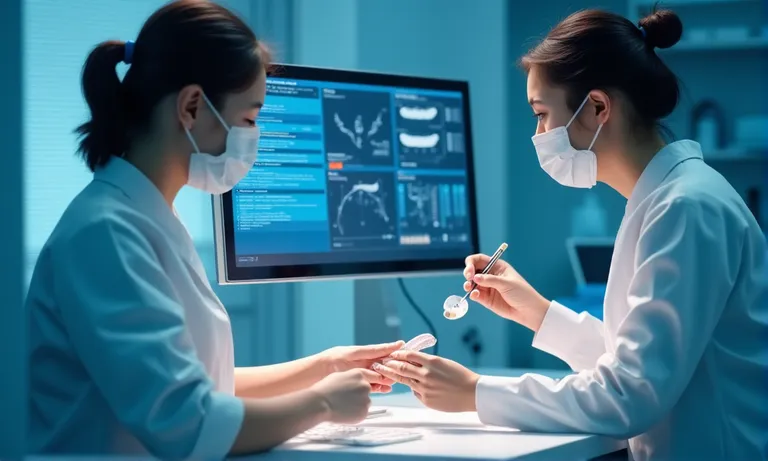
Digital-workflow-compatibility-lab-input
Do they support your scanner output formats and design files (STL, PLY, DICOM)?
File-level compatibility affects the very first step of collaboration. Labs that only support STL may lose margin texture or anatomical references embedded in PLY. Similarly, not all CAM systems can process DICOM overlays or volumetric guides.
The key is simple: if the lab can’t natively read your files, everything downstream becomes a workaround.
Are they open system or locked to specific software/hardware workflows?
| System Attribute | Closed-System Lab | Open-Compatible Lab |
|---|---|---|
| Scanner input accepted | Limited to same-brand or partner equipment | Accepts outputs from major intraoral scanners |
| File types supported | STL only or proprietary | STL, PLY, DICOM supported |
| Portal prescription flow | Fixed templates, limited fields | Adaptable intake matching client setup |
| Integration with client tools | Minimal (email/manual) | API or structured upload-compatible |
Labs with open infrastructure adapt more easily and require less back-and-forth, especially in large teams with diverse setups.
How quickly can they adapt to your prescription, scan input, or file transfer process?
A growing clinic in New Zealand came to us after struggling with a previous lab that required manual file conversions, fixed intake forms, and didn’t support their PLY output. Each case required 2–3 emails and calls to clarify file formats or resend prescriptions.
After switching to a lab with automated file intake and direct compatibility with their TRIOS and Carestream systems, onboarding took less than a week. File handoffs became seamless, and their case rework rate dropped by 22% in the first month.
When labs adapt to your workflow—not the other way around—scalability becomes reality, not theory.
What Indicators Show a Lab Can Scale Technology Reliably?
A lab’s ability to scale digital workflows isn’t just about having more equipment—it’s about whether their systems, people, and quality controls can keep pace as volumes grow. For DSOs, distributors, and multi-clinic networks, this becomes the defining difference between short-term suppliers and long-term partners.
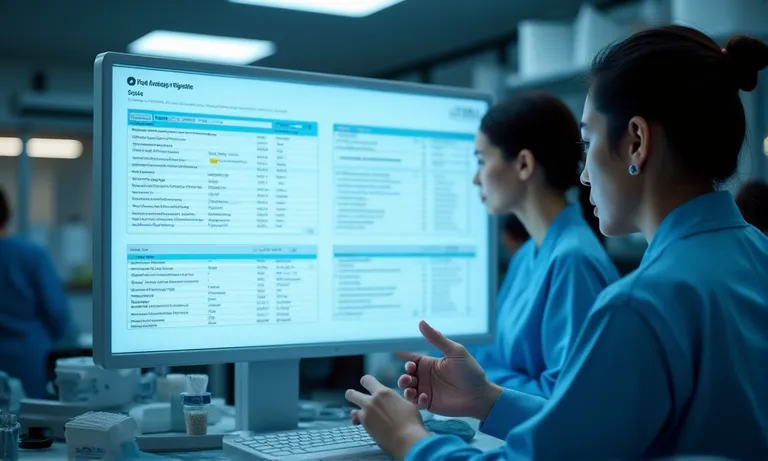
Dental-lab-scaling-process-digital-qc
Can they manage consistent output quality across large-volume digital cases?
- Case batching and nesting logic: Labs with scalable systems optimize not just milling, but how cases are grouped, assigned, and pre-validated.
- Dynamic workload allocation: Technicians are routed cases by skillset and system load, minimizing human bottlenecks.
- QC at scale: Scalable labs have multi-point QA embedded—not added—across the digital chain.
- Redundancy planning: They can shift production across machines or shifts without disrupting quality or timelines.
Scaling isn’t “more of the same”—it’s “repeatable at higher volume.”
How do they manage technician training and system upgrades at scale?
| Scalability Dimension | Unprepared Lab | Scalable Lab |
|---|---|---|
| New tech rollout | Ad-hoc, informal demos | Staged onboarding with simulation training |
| SOP updates | Manually distributed, inconsistent | Version-controlled with tracked acknowledgments |
| QA handoffs | Individual-driven, memory-based | Cross-team workflows with digital checkpoints |
| Peak-time performance | Production delay or backlogs | Load balancing with burst-capacity planning |
Scalable labs think in systems, not staff capacity.
Are there signs of institutionalized QA around digital production?
A North American DSO we worked with previously relied on a regional lab that scaled too quickly—buying new mills and hiring fast, but without reinforcing QA. In just two months, contact fit complaints rose by 27%, and remakes surged across three clinics.
They transitioned to a lab that had implemented production dashboards, real-time QA alerts, and technician certification tied to complexity levels. The results: remake rates dropped under 4%, and digital rework requests were cut in half.
Scaling isn’t about promises—it’s about structure. Labs that build it in from the beginning don’t collapse when orders ramp up.
How Can You Compare Labs Based on Their Technology Implementation Maturity?
Choosing between multiple tech-enabled labs requires more than comparing equipment lists or software logos. True technology maturity is reflected in how consistently that technology is deployed, supported, and scaled across the production floor.
Image
ALT: Lab-maturity-assessment-digital-ops
Prompt: A highly realistic image of a side-by-side digital readiness dashboard showing two dental labs. One shows high maturity with clean SOPs, validation batches, and QA checkpoints; the other shows disorganized files, missing steps, and flagged rework stats. Technicians of varying experience levels reviewing the process on screen.
What benchmarks help differentiate between early-stage vs mature labs?
- Live case validation: Mature labs will show tech working at volume, not just in trial mode
- Integrated QA routines: Real-time monitoring, issue flagging, and feedback loops
- Documentation and traceability: Versioned SOPs, technician logs, and audit trails
- Operational redundancy: Ability to sustain output during equipment failures or scale spikes
- Feedback responsiveness: How fast and clearly labs resolve compatibility or handoff issues
You’re not just evaluating tools—you’re evaluating whether the team has internalized how to use them consistently.
Should you request digital test cases or validation batches?
A UK-based multi-clinic group ran initial batches through two short-listed labs. One lab accepted TRIOS inputs but lacked QA checkpoints, resulting in inconsistent occlusion and contact trimming issues.
The second lab requested five validation cases, returned annotated reports, and invited the client’s digital lead to review nested CAM plans via screen-share. Not only did they calibrate faster, but they also set expectations for future scale.
Validation batches reveal maturity far more clearly than sales slides.
Are there any certifications, audit reports, or client references available?
| Assessment Dimension | Early-Stage Lab | Mature Lab |
|---|---|---|
| Client references | General or outdated | Digital workflow–specific, recent |
| Certification/Audit trail | None or informal | Documented, third-party or internal QA |
| System update process | Ad hoc | Logged, versioned, technician signed-off |
| SLA tracking / KPI dashboard | Rare or Excel-based | Real-time system + client-shared summary |
In mature labs, transparency is not a favor—it’s a standard.
Conclusion
In an industry where technology evolves quickly but implementation varies widely, assessing a lab’s maturity is not optional—it’s essential. Whether you’re scaling digital case volume, integrating new systems, or seeking long-term consistency, the difference lies not in the tools a lab owns, but how well they’re used.
As a global dental lab supporting fast-growing clinics and distributors, we’ve learned that reliable partnership starts with workflow transparency and proven execution—not just adoption headlines. Ask the hard questions. Your patients—and your production team—will thank you.


